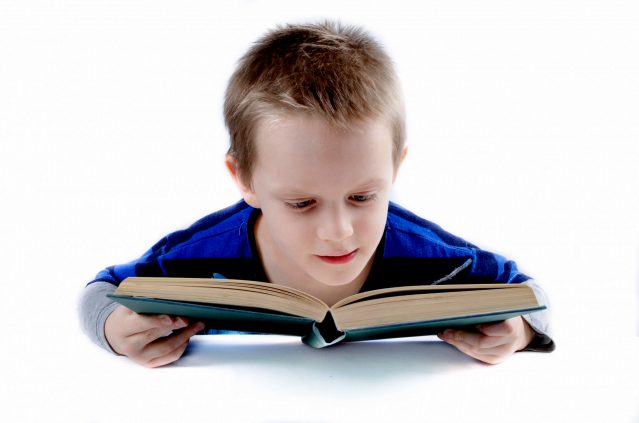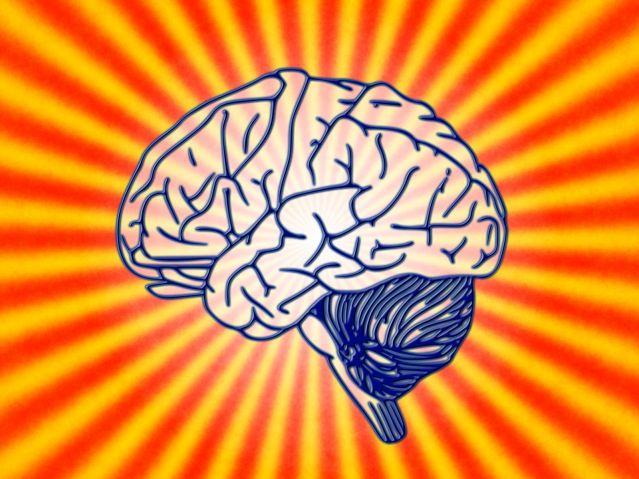Psychology Today Reading Nonfiction Improves Brain Connectivity and Function

Neuroscientists mapping the brain take discovered that reading fiction taps into the same brain networks as real life experience. When you are engaged in reading a fictional story your brain is literally living vicariously through the characters at a neurobiological level.
Researchers at Carnegie Mellon University have plant that reading a chapter of "Harry Potter and the Sorcerer's Stone" lights up the aforementioned brain regions that would exist involved in watching someone moving—or flying on a broom—in the real world.
The November 2022 study, "Simultaneously Uncovering the Patterns of Brain Regions Involved in Unlike Story Reading Subprocesses," was published in the online journal PLOS One.
For years at present, neuroscientists around the world have been using brain imaging engineering science to strop in on the specific brain regions and neural networks that are activated when someone is reading fiction.
In a previous report, cognitive scientists in France found that when someone read a sentence like "Pablo kicked the ball" or "John grasped the object" that brain scans revealed the specific regions of the motor cortex linked to either kicking or grasping an object lite up in the fMRI.
It appears that reading fiction can meliorate the reader's ability to put themselves in another person's shoes and flex the imagination in a way that is very similar to the visualization that an athlete would utilise to activate the motor cortex and muscle retentiveness used in sports during a mental rehearsal.
For the new Carnegie Mellon written report, the researchers were able to use fMRI to identify specific parts of the encephalon which are responsible for such subprocessing as the relationships between characters, parsing sentences, and determining the usage and meaning of individual words.
Leila Wehbe, a Ph.D. student in the Car Learning Department, and Tom Mitchell, the department caput, were able to predict specific fMRI encephalon action relating to a specific text passage with 74 per centum accurateness, which is quite amazing.
In a press release Leila Wehbe described the experiment saying, "The examination subjects read Chapter ix of Sorcerer's Rock, which is about Harry's first flying lesson. It turns out that movement of the characters—such every bit when they are flight their brooms—is associated with activation in the same brain region that we use to perceive other people's motion. Similarly, the characters in the story are associated with activation in the same brain region we use to process other people'due south intentions."
Reading Fiction Improves "Theory of Mind"

Theory of mind (oft abbreviated ToM) is described as "the ability to aspect mental states — beliefs, intents, desires, pretending,knowledge, etc. — to oneself and others and to sympathize that others accept behavior, desires, and intentions that are dissimilar from one'south own."
In August 2014, Raymond Mar, a psychologist at York University in Canada, gave a lecture titled "Fiction and Its Relation to Existent-Earth Empathy, Cognition, and Behavior," at the American Psychological Association's 122nd Annual Convention.
In his lecture, Mar discussed how exposure to narrative fiction tin improve theory of mind and someone'due south ability to understand what other people are thinking, feeling, and doing.
Mar explained that when you are engaged in reading a story that your brain automatically puts yourself in the graphic symbol'due south shoes. Throughout the procedure of reading narrative fiction, the reader learns life lessons from how he or she personally experiences the journeying of the protagonist and other characters in the story.
In my Psychology Today blog postal service from January 2014, "Reading Fiction Improves Brain Connectivity and Office," I also made the decision that one of the benefits of reading fiction is that putting yourself in someone else's shoes through reading a fictional story improves theory of mind.
Every bit the begetter of a vii-year-old, I have witnessed the theory of mind benefits of my daughter and other children losing themselves in a skillful story and narrative fiction.
In his lecture, Mar spoke nearly an Baronial 2022 written report, "Tin can Classic Moral Stories Promote Honesty in Children?" which plant that reading a child a fictional story about honesty led the child to act more than honestly when presented with a situation in which he or she could prevarication or crook.
Reading Engages All Four Brain Hemispheres and the Hippocampus

An August 2013 study, "Decoding the Neuroanatomical Basis of Reading Ability: A Multivoxel Morphometric Study," from the University of Southern California found that different regions throughout the encephalon work together to make it possible for us to empathize linguistic communication and identify with the characters in a story.
"Reading is a circuitous task. No unmarried role of the brain can do all the work," said Qinghua He, postdoctoral inquiry acquaintance at the USC Brain and Creativity Institute and the first author of this written report said in a press release near his research which was published in the Journal of Neuroscience.
Interestingly, the USC study brain scans showed a direct correlation between how well a reader could make a connection between a new word and a sound, and the volume of gray matter in the hippocampus and cerebellum.
Specifically, their MRI analysis showed that phonological decoding ability was strongly connected with gray matter volume in the left superior parietal lobe (around the top/rear of the brain) while class-sound association was strongly continued with the hippocampus and cerebellum.
In future studies, the researchers will explore how to combine data from other factors, such as white matter connectivity, and default fashion network and task functional MRI.
Decision: One More Reason to Cancel Your Cable Contract


The average American home has 2.86 TV sets, which is roughly xviii% higher than in the year 2000 (2.43 sets per home), and 43% higher than in 1990 (2.0 sets). In America, there are currently more televisions per home than human beings. On average, children nether the age of 8 spend over xc minutes a twenty-four hours watching goggle box or DVDs. This is disturbing.
Unfortunately, television is the least interactive of whatever new media and is the one almost probable to reduce theory of mind. A paper titled "The Relation Between Television Exposure and Theory of Listen Amid Preschoolers" was published in November 2013 in the Journal of Communication.
The researchers constitute that preschoolers who have a Telly in their bedroom and are exposed to more groundwork Television receiver have a weaker understanding of other people's beliefs and desires, and reduced cognitive development.
The bedtime ritual of reading a story with your child is an unbeatable way to foster theory of mind while bonding physically and emotionally in a digital-free environment that primes everybody's brain and circadian clock for a audio sleep.
Reading before bed is the perfect way to terminate the mean solar day for people of all ages. If you tend to fall asleep with the idiot box on, why not end your day by reading a volume instead?
Reading a paperback or hardcover volume earlier bed could also help you sleep better. Evidence is mounting that the artifical light of digitial devices and television before bed throws off cyclic rhythms and could crusade insomnia.
If you'd like to read more on this topic check out my Psychology Today blog posts:
- "Reading Fiction Improves Brain Connectivity and Function"
- "The Neuroscience of Empathy"
- "Two Uncomplicated Ways to Aid Children Slumber Better"
- "Why Is a Camping ground Trip the Ultimate Insomnia Cure?"
- "Exposure to Natural Light Improves Workplace Performance"
- "Circadian Rhythms Linked to Aging and Well-Being"
- "Mindfulness Training and the Compassionate Brain"
- "One More Reason to Unplug Your Television set"
- "The Evolotionary Biology of Altruism"
- "How Does Heedless Help Form Long-Term Memories?"
- "The Neuroscience of Imagination"
- "Childhood Creativity Leads to Innovation in Adulthood"
- "Besides Much Crystallized Thinking Lowers Fluid Intelligence"
- "Pity Tin can Be Trained"
- "How Tin Daydreaming Meliorate Goal-Oriented Results?"
- "Imagination and Reality Period Conversely Through the Brain"
Follow me on Twitter @ckbergland for updates on The Athlete's Way web log posts
Photograph Credits: Pixabay
Source: https://www.psychologytoday.com/us/blog/the-athletes-way/201412/can-reading-fictional-story-make-you-more-empathetic
0 Response to "Psychology Today Reading Nonfiction Improves Brain Connectivity and Function"
Postar um comentário